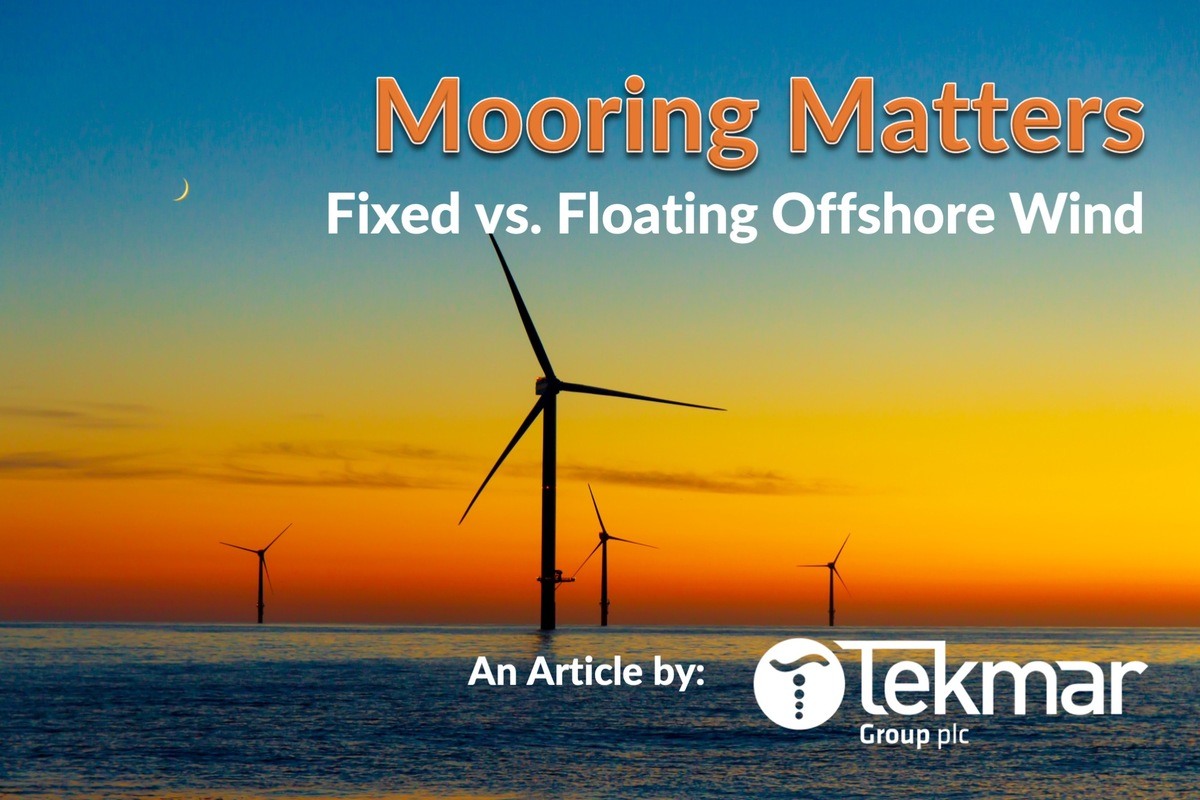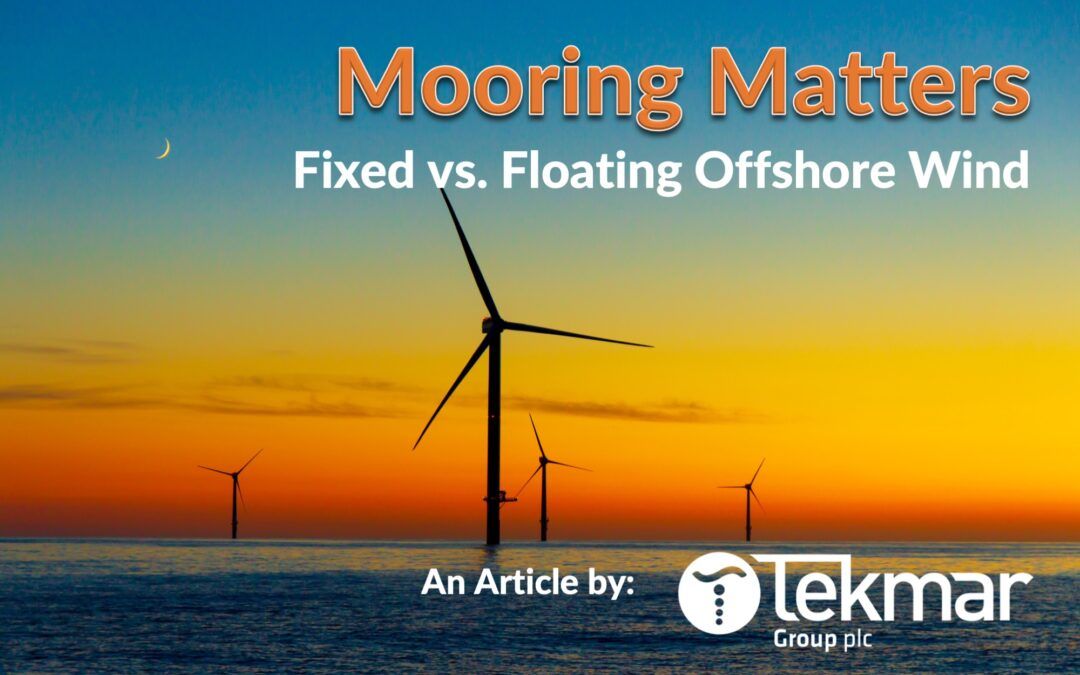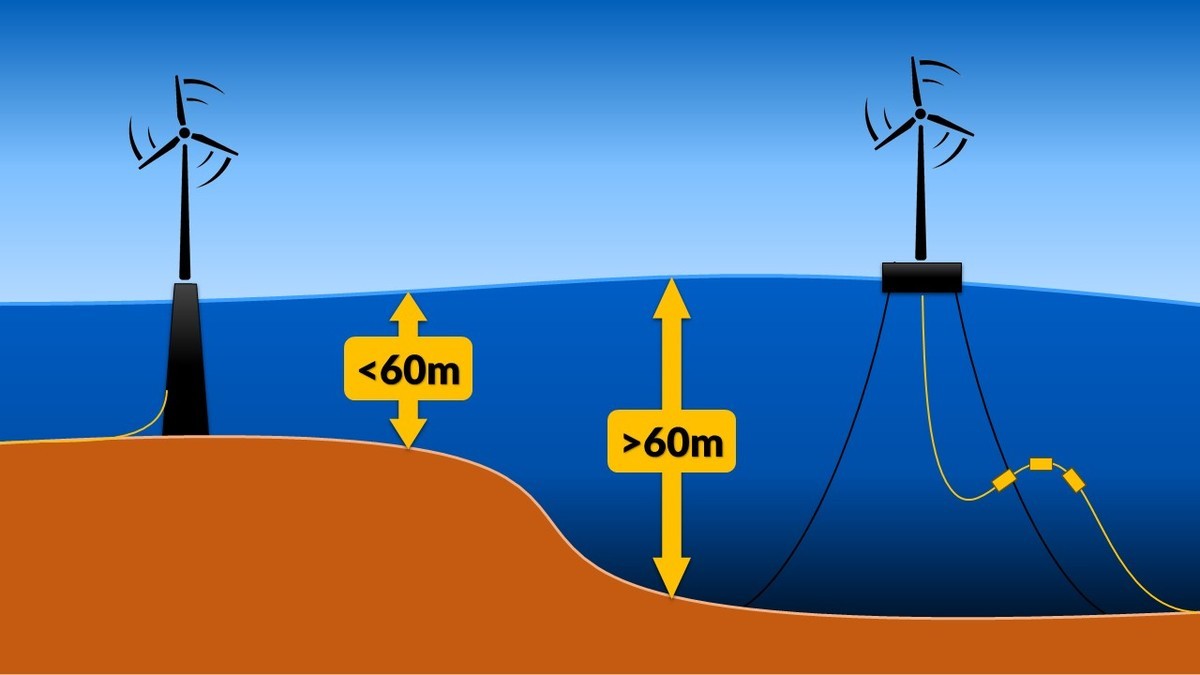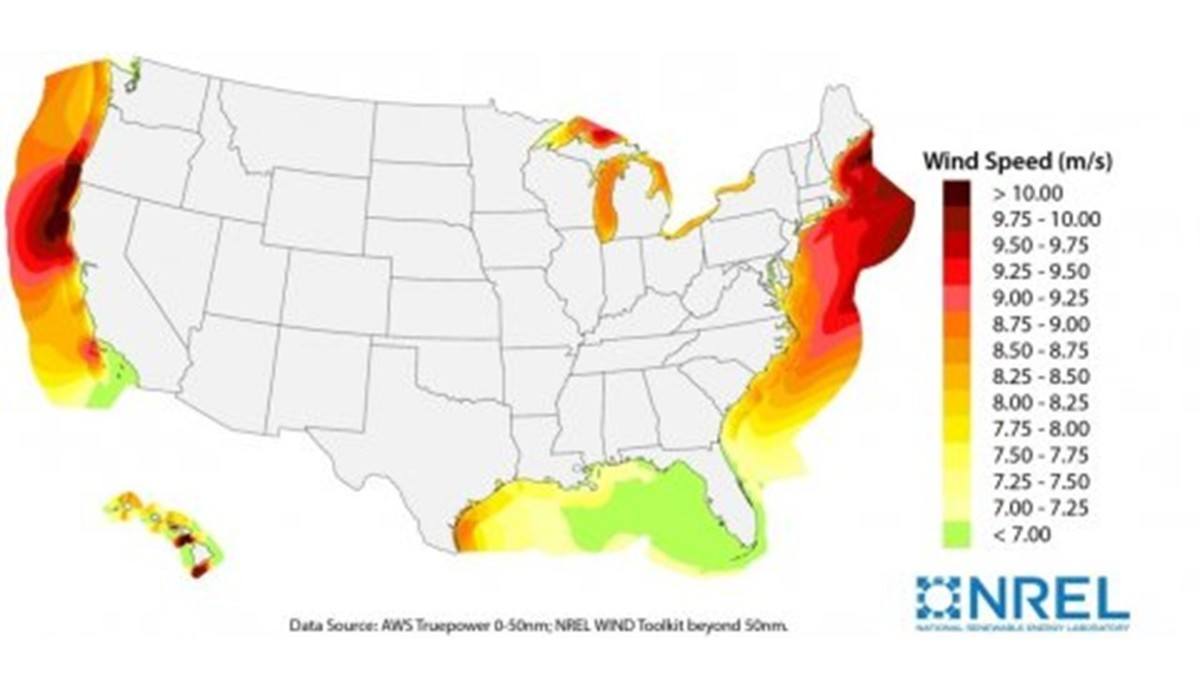
For the next installment in our series of technical articles, we have asked our colleagues at Tekmar Group to give us a primer on Fixed versus Floating Offshore Wind Turbines.
The article looks at the benefits and challenges of each.
Harnessing the Power of the Winds
As the world transitions towards cleaner and more sustainable energy sources, offshore wind power has emerged as a critical player in the renewable energy sector. While fixed offshore wind turbines have been the predominant choice for harnessing wind energy over the years, recent advancements have introduced a new contender: floating offshore wind turbines.
This article will explore the differences between fixed and floating offshore wind turbines, examining their advantages, challenges, and potential for revolutionizing renewable energy generation.
Fixed Offshore Wind Turbines: Stability and Reliability
Fixed Offshore Wind Turbines, as the name suggests, have a direct rigid connection to the seabed, so they are ‘fixed’ in a permanent static position. These structures consist of large wind turbines mounted on monopile, jacket, or gravity-based foundations, typically installed in water depths up to 60 meters. Fixed turbines have been widely deployed across Europe, where the industry has rapidly matured.
One of the significant advantages of Fixed Offshore Wind Turbines is their stability. Being directly fixed to the seabed provides a stable static structure, allowing these turbines to withstand harsh weather conditions, including strong winds and rough seas. Fixed turbines offer relatively straightforward installation and maintenance due to their permanent positioning. This factor reduces maintenance costs and reliability, enabling consistent power generation compared to more dynamic structures.
Floating Offshore Wind Turbines: Unlocking Deep Waters
On the other hand, Floating Offshore Wind Turbines offer a solution to harness wind energy in deeper waters, where fixed turbines are impractical. These turbines are not static or directly affixed to the seabed but moored in place using offset anchors or foundations and mooring lines. Floating turbines are particularly suitable for water depths exceeding 60 meters and can operate in areas with challenging seabed conditions.
One of the primary advantages of floating offshore wind turbines is their ability to tap into wind resources in locations inaccessible for fixed turbines. This opens up vast areas of deep waters worldwide for wind energy development. Floating turbines also benefit from stronger and more consistent winds found farther offshore, leading to potentially higher energy production. Moreover, installing floating turbines further from the shore reduces visual impacts and mitigates potential conflicts with other marine activities.
Challenges and Innovations
While both Fixed and Floating Offshore Wind Turbines have advantages, they also face distinct challenges. For fixed turbines, the major limitation lies in water depth constraints, limiting their deployment to relatively shallow waters.
Although promising, floating offshore wind turbines face challenges related to their relatively nascent stage of development. The technology requires further refinements to enhance stability, reduce costs, and improve power output. However, significant progress has been made in recent years, with several pilot projects and demonstration sites showcasing the potential of floating turbines. Innovative floating foundation designs offer improved stability and reduced motion on high seas.
Future Prospects
The emergence of Floating Offshore Wind Turbines presents exciting possibilities for expanding wind energy capacity. Countries with limited shallow coastal areas can tap into abundant wind resources by venturing into deeper waters. Additionally, advancements in floating turbine technology are expected to lead to cost reductions, increased reliability, and scalability.
Meanwhile, Fixed Offshore Wind Turbines continue to be a reliable and maturing technology that has proven its worth over the years. They will likely remain dominant for near-shore projects and regions with suitable seabed conditions.
Tekmar Group plc, based in Darlington UK, provides market-leading technology and services to the global offshore energy markets through its primary operating companies Ryder Geotechnical Limited, AgileTek Engineering Limited, Subsea Innovation Limited, Tekmar Energy Limited, and Pipeshield International Limited.
Learn more at www.TekmarGroup.com

DeepWater Buoyancy, Inc., located in Maine USA, provides subsea buoyancy products for offshore energy, oceanographic, military, and technology companies around the world. Customers have relied on our products for over forty years, from the ocean surface to depths exceeding six thousand meters.
Learn more at DeepWaterBuoyancy.com





